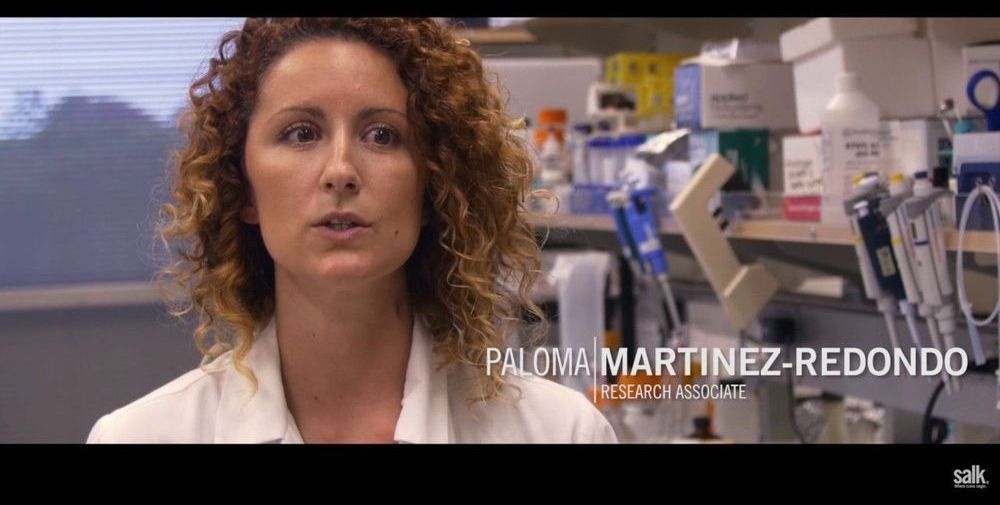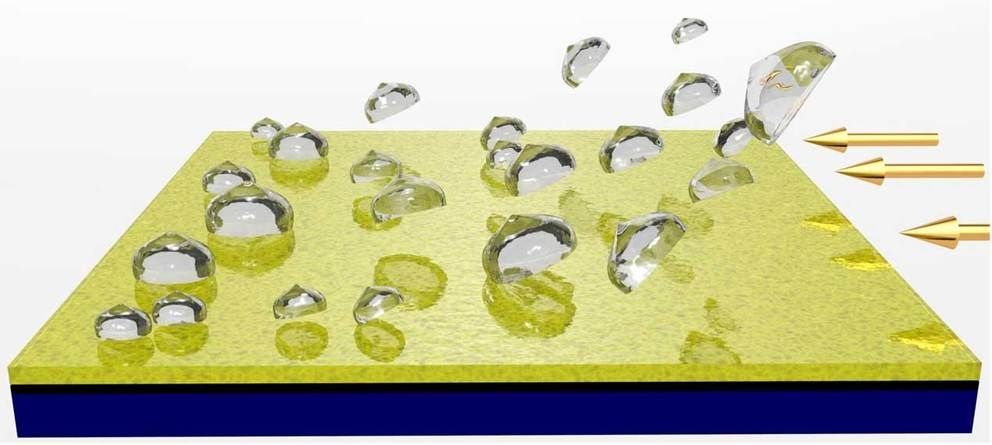Page 48
Jan 17, 2019
Alien Worlds, Extraterrestrial Life: Space Artist Sketches The Cosmos
Posted by Bill Retherford in category: alien life
Jan 17, 2019
Hitting the Reset Button on Aging Cells
Posted by Steve Hill in categories: genetics, life extension

Today, we chronicle the progress of OSKM and discuss how this powerful treatment may be able to reprogram cells back into a youthful state, at least partially reversing the hallmark of epigenetic alterations and other hallmarks as well.
The birth of cellular reprogramming
Continue reading “Hitting the Reset Button on Aging Cells” »
Jan 17, 2019
Rationality: research shows we’re not as stupid as we have been led to believe
Posted by Xavier Rosseel in category: robotics/AI

‘’Computational rationality leads to a deeper understanding because it goes beyond descriptions of how we fail. Instead, it shows us how the brain marshals its resources to solve problems. One benefit of this approach is the ability to test theories of what our abilities and constraints are.
Decades of psychological research suggests humans are rather irrational. But a new approach, borrowing an idea from artificial intelligence, challenges this notion.
Continue reading “Rationality: research shows we’re not as stupid as we have been led to believe” »
Jan 17, 2019
New scale for electronegativity rewrites the chemistry textbook
Posted by Genevieve Klien in categories: chemistry, education, particle physics, quantum physics
Electronegativity is one of the most well-known models for explaining why chemical reactions occur. Now, Martin Rahm from Chalmers University of Technology, Sweden, has redefined the concept with a new, more comprehensive scale. His work, undertaken with colleagues including a Nobel Prize-winner, has been published in the Journal of the American Chemical Society.
The theory of electronegativity is used to describe how strongly different atoms attract electrons. By using electronegativity scales, one can predict the approximate charge distribution in different molecules and materials, without needing to resort to complex quantum mechanical calculations or spectroscopic studies. This is vital for understanding all kinds of materials, as well as for designing new ones. Used daily by chemists and materials researchers all over the world, the concept originates from Swedish chemist Jöns Jacob Berzelius’ research in the 19th century and is widely taught at high-school level.
Now, Martin Rahm, Assistant Professor in Physical Chemistry at Chalmers University of Technology, has developed a brand-new scale of electronegativity.
Continue reading “New scale for electronegativity rewrites the chemistry textbook” »
Jan 17, 2019
Researchers make ice repelling materials breakthrough
Posted by Genevieve Klien in categories: energy, materials

Ice is one of the most significant hazards to drivers and pilots and is blamed for multibillion-dollar losses each year in the US. Ice causes all manner of delays in air travel and damages infrastructure, power generation equipment, and power transmission facilities each year. Scientists from the University of Houston have made a breakthrough in repelling ice that could have uses in multiple industries.
Jan 17, 2019
Dragon blood may help wounds heal faster
Posted by Shane Hinshaw in category: biotech/medical
Jan 17, 2019
Inside China’s Future Factory | Hello World Shenzhen: Part One
Posted by Derick Lee in categories: business, futurism

Over the past 40 years, the fishing village of Shenzhen has been reborn as a futuristic metropolis bursting with factories. Bloomberg Businessweek’s Ashlee Vance travels to the heart of China’s tech revolution to witness this new reality firsthand, as part of a three-episode exploration of the city. In part one of Hello World Shenzhen, Vance gets a worker’s view of life in a startup and then explores one of the city’s famous electronics markets to learn how people survive (and in some cases make fortunes) in such a frenetic, competitive environment.
https://www.bloomberg.com/hello-world
Continue reading “Inside China’s Future Factory | Hello World Shenzhen: Part One” »
Jan 16, 2019
A Review of the Potential of Phytochemicals from Prunus africana (Hook f.) Kalkman Stem Bark for Chemoprevention and Chemotherapy of Prostate Cancer
Posted by James Christian Smith in categories: augmented reality, biotech/medical
Prostate cancer remains one of the major causes of death worldwide. In view of the limited treatment options for patients with prostate cancer, preventive and treatment approaches based on natural compounds can play an integral role in tackling this disease. Recent evidence supports the beneficial effects of plant-derived phytochemicals as chemopreventive and chemotherapeutic agents for various cancers, including prostate cancer. Prunus africana has been used for generations in African traditional medicine to treat prostate cancer. This review examined the potential roles of the phytochemicals from P. africana, an endangered, sub-Saharan Africa plant in the chemoprevention and chemotherapy of prostate cancer. In vitro and in vivo studies have provided strong pharmacological evidence for antiprostate cancer activities of P. africana-derived phytochemicals. Through synergistic interactions between different effective phytochemicals, P. africana extracts have been shown to exhibit very strong antiandrogenic and antiangiogenic activities and have the ability to kill tumor cells via apoptotic pathways, prevent the proliferation of prostate cancer cells, and alter the signaling pathways required for the maintenance of prostate cancer cells. However, further preclinical and clinical studies ought to be done to advance and eventually use these promising phytochemicals for the prevention and chemotherapy of human prostate cancer.
Prostate cancer is one of the most common nonskin cancers in men. It is caused by unregulated prostate cell division, which leads to abnormal growth, with the potential to spread to other parts of the body [1]. These neoplastic cells originate from highly specialized cells through a process of regression to an advanced stage. Unlike the normal parent cells, these cells divide continuously, resulting in a tumor. Approximately, 9–11% of men are at risk of clinically suffering from prostate cancer in their life time [2–5]. Prostate cancer is typically androgen-dependent during its initial stages when the hormone androgen binds to the androgen receptor (AR) and then transactivates target genes [6, 7]. Androgen and AR-mediated signaling are therefore crucial for the development and functioning of both the normal prostate and prostate cancer.
Jan 16, 2019
SLS Liquid Hydrogen Tank Test Article Loaded into Test Stand
Posted by Michael Lance in category: transportation
The structural test article for the liquid hydrogen tank, a component of the #NASASLS core stage, has been loaded into its new home, a test stand at NASA’s Marshall Space Flight Center in Huntsville, Alabama. The 149-foot piece of test hardware will go through rigorous testing simulating the stresses of liftoff and flight. MORE.
The largest piece of structural test hardware for America’s new deep space rocket, the Space Launch System, was loaded into Test Stand 4693 at NASA’s Marshall Space Flight Center in Huntsville, Alabama Jan. 14, 2019. The liquid hydrogen tank is part of the rocket’s core stage that is more than 200 feet tall with a diameter of 27.6 feet, and stores cryogenic liquid hydrogen and liquid oxygen that will feed the vehicle’s RS-25 engines. The liquid hydrogen tank test article is structurally identical to the flight version of the tank that will comprise two-thirds of the core stage and hold 537,000 gallons of supercooled liquid hydrogen at minus 423 degrees Fahrenheit. Dozens of hydraulic cylinders in the 215-foot-tall test stand will push and pull the tank, subjecting it to the same stresses and loads it will endure during liftoff and flight.
Image Credit: NASA/Tyler Martin
Continue reading “SLS Liquid Hydrogen Tank Test Article Loaded into Test Stand” »














